Diane: Yesterday, we finally got to ride a long distance train! Many of the South American passenger train services have been abandoned one by one over the years. In Bolivia, a once thriving industry now runs at just a fragment of its former capacity. According to our guide for the Salar de Uyuni tour, the train company used to employ 7000 employees in Uyuni alone. Now there are just a handful of employees. As it turns out, our guide is not a terrific source of information, except for the prices of various commodities, such as quinoa or salt, and our current elevation, so I take this with a grain of salt.
Although we sat on the sunny side of the train and kept the shades down for the most part, the large expanses of land were easily viewed through the large windows on the opposite side. The most extraordinary portion of the journey was riding through a large marsh/lake. It seems an unlikely spot for railroad tracks.

Today we started our tour of the Salar de Uyuni, salar meaning salt flat and Uyuni being the name of the nearest town. It was a fantastic spectacle - a white lake of salt, up to 120 meters deep at its deepest. Small portions of the salar were still underwater following the rainy season, meager as it was.
We traveled by Toyota LandCruiser, 6 passengers to each vehicle.
We stopped in a small town where they refine salt and make salt sculptures to sell to tourists. Salt certainly left its mark.
The walls of the store were made entirely of salt bricks. Calliope took a taste just to be sure.

The most popular construction method involved the use of calcified rock for the foundation, adobe bricks for the walls, and grass (paja) roofs.
Our next stop was to examine the salt mining methods used on the Salar. As the water in the Salar dries up after the rainy season, locals create large mounds of salt. These mounds dry in the sun for about a month, and then are loaded into the back of a pickup and for the most part, carted off to be refined for personal use.
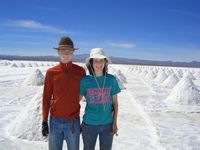 | 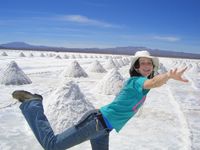 |
Still traveling on the Salar, our next stop was the Salt Hotel. The building is made of salt; the chairs are made of salt; even the beds are made of salt.

This building is no longer used as a hotel, so they call it a museum now.
We ate lunch at Fish Island, so called, because as you approach it from a distance and from a certain angle and at a certain time of year, it looks like a fish. We evidently didn't hit it quite right. It is covered with wonderfully huge cacti and craggy volcanic rock.


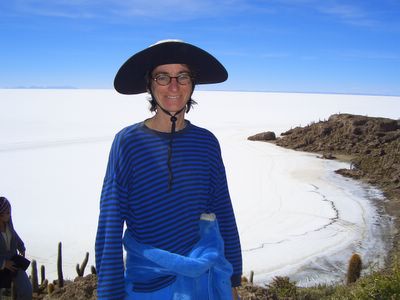



We continued, carefully skirting an area of the Salar in which cars would sink if they weren't careful, even taking a road where necessary.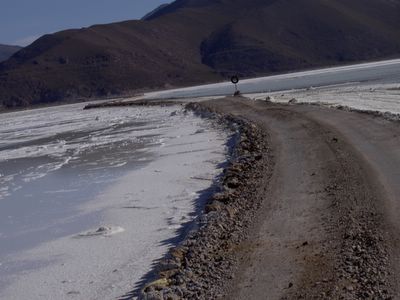
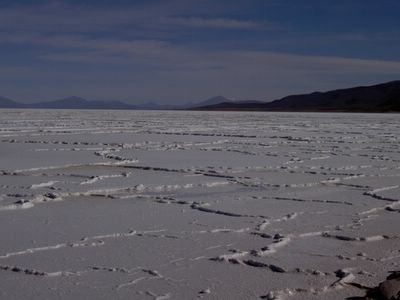
Our hostel for the evening was located in the small town of Chuvica. The crusty dirt, salt, and plant formations along the edge of the Salar were captivating.



No comments:
Post a Comment